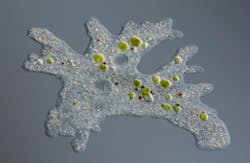Airplane water contains high levels of bacteria
FORT WORTH, Texas — New test results from the U.S. Environmental Protection Agency (EPA) reveal how often drinking water served on commercial airline flights tests positive for bacteria, according to NBCDFW-TV.
The numbers reveal that, nine years after the EPA launched a "major effort to ensure the safety of drinking water on-board planes," the water isn’t much cleaner than it was when the EPA first conducted sample tests back in 2004, the article stated.
According to the article, in 2004 the EPA sampled about 300 planes and found 15 percent of them, or just more than one out of every 10 planes, tested positive for coliform, an indicator that other potentially harmful bacteria may be in the water.
New EPA data obtained through a Freedom of Information Act request shows that in 2012, 12 percent of commercial airplanes in the U.S. had at least one positive test for coliform, which is still just about one out of every 10 planes, the article noted.
While coliform itself may not make a person sick, it can be a red flag that other bacteria, like E. coli, have made their way into the water, the article added.
Read the full article here.
